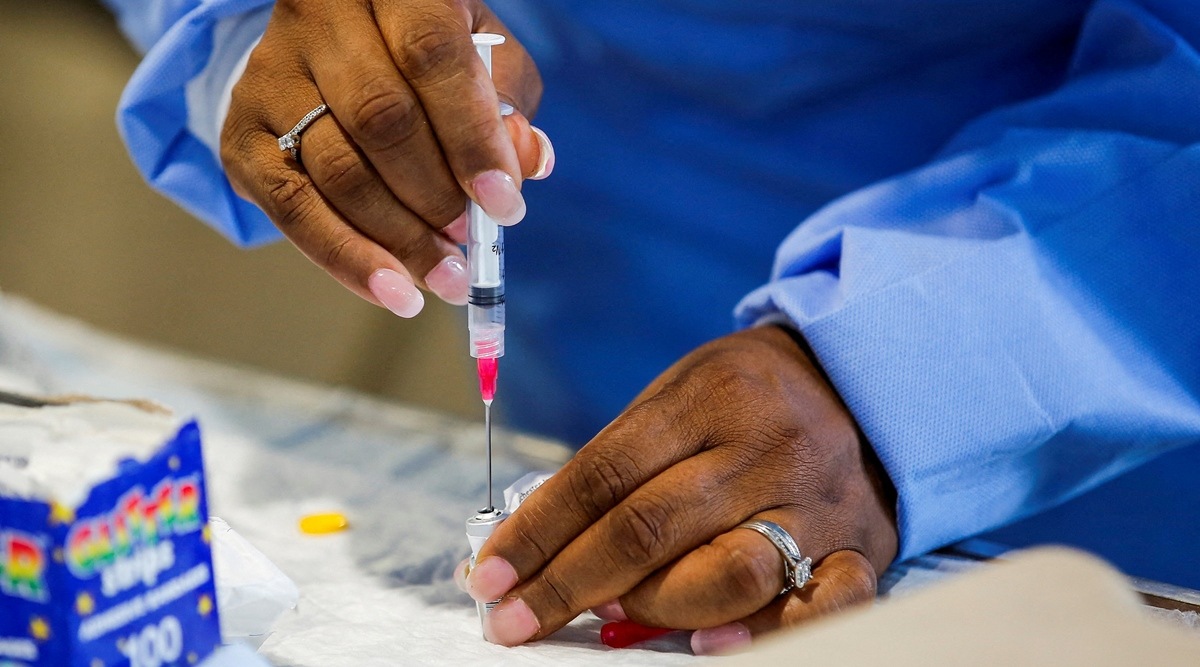 The current monkeypox outbreak in the United States is also down to the circulation of the MPXV lineage A.2 from 2021, which has evolved from lineage A that caused the Nigeria outbreak in 2017–2018. (Reuters)
The current monkeypox outbreak in the United States is also down to the circulation of the MPXV lineage A.2 from 2021, which has evolved from lineage A that caused the Nigeria outbreak in 2017–2018. (Reuters)Researchers at the Indian Council of Medical Research – National Institute of Virology (ICMR-NIV) have said that the strain of monkeypox virus found in the country’s first two reported cases is different from the one which caused the spread in Europe.
The genome sequencing of the two patients, who had returned from the United Arab Emirates (UAE), showed that they were infected with monkeypox virus strain A.2, according to the research led by Dr Pragya Yadav, senior scientist with the ICMR-NIV. The variant found in large parts of Europe is B.1.
However, researchers at the NIV said they were yet to study how significant or dangerous the A.2 strain is.
According to the research published as a preprint in Research Square – a multidisciplinary preprint and author services platform, the A.2 strain belongs to the hMPXV-1A lineage of clade 3.
Subscriber Only Stories
The first two monkeypox cases in India had symptoms of fever, myalgia, and lesions on the genital area, it said. “They returned in July and clinical specimens like oropharyngeal, nasopharyngeal swabs, blood urine and lesion samples were collected on the ninth-day post onset of illness. They were tested with real-time PCR and genome sequencing showed that they were infected with monkeypox virus strain A.2,” said the report.
The current monkeypox outbreak in the United States is also down to the circulation of the MPXV lineage A.2 from 2021, which has evolved from lineage A that caused the Nigeria outbreak in 2017–2018.
”The complete genome sequences obtained from skin lesions of cases 1 and 2 showed similarity of 99.91 and 99.96 per cent respectively with MPXV_USA_2022_FL001 West African clade. Phylogenetic analysis revealed that the two cases were infected with monkeypox virus strain A.2 which belong(s) to hMPXV-1A lineage of clade 3 (West African clade),” the study by the NIV said.
The West African and Central Africa (Congo Basin) are the two known clades of the monkeypox virus, of which the Congo Basin strain causes more severe illness, 0–11 per cent mortality and increased transmissibility. The West African clade is found to be circulating in the current ongoing outbreaks of 2022 in non-endemic countries.
According to the report, the two close contacts (mother and brother) of the first patient showed symptoms such as sore throat and were screened negative for the monkeypox virus. Considering the surge in Covid-19 cases globally and India, these cases were screened and the brother of the patient was found positive for SARS-CoV-2. The three close contacts of the second patient were asymptomatic in the observation period.
So far, India has reported nine monkeypox cases.
The monkeypox virus belongs to the Orthopoxvirus genus and Poxviridae family which has been in the endemic stage in Central and West Africa since 1970 and now has been reported from various non-endemic countries in 2022.
On July 23, World Health Organization (WHO) declared monkeypox as a public health emergency of international concern (PHEIC) considering the global outbreaks in all six regions in multiple countries. The cases were found to occur mainly due to imported infections from endemic countries and due to further community transmission.
The monkeypox infection starts with a febrile illness with an average incubation of 5–13 days with lymphadenopathy, myalgia, and headache, followed by deep-seated umbilicated vesicular/pustular rashes. The rash primarily starts from the face (oral), genital or perianal region and is then distributed in a centrifugal manner to other parts of the body and progresses over time to scab. The primary infection is of zoonotic origin through contact with infected animals.
It is followed by a secondary human-to-human transmission that occurs by direct contact with infected body fluids or lesions, via infectious fomites, or through respiratory droplets.
- The Indian Express website has been rated GREEN for its credibility and trustworthiness by Newsguard, a global service that rates news sources for their journalistic standards.

